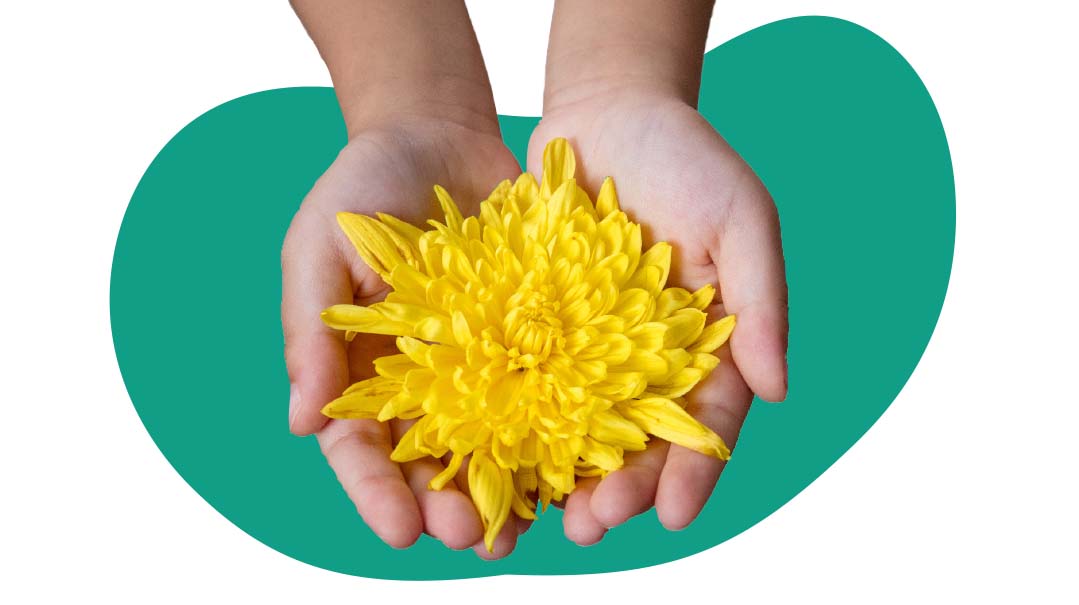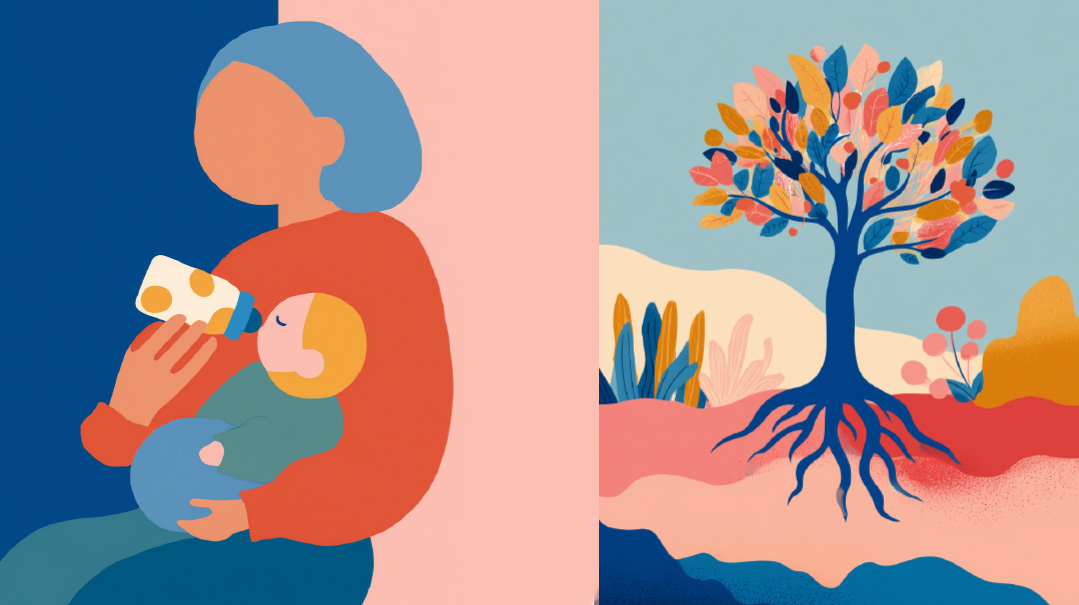Mindscape
| February 22, 2022Children should learn why they’re being asked to say thank you — and attach meaning to the words

Mindscape
Abby Delouya, B.A., B.Ed., RMFT-CCC
Quick Tips To: Teaching the Attitude of Gratitude
Gratitude isn’t something children acquire automatically. Research has shown that gratitude is linked to positive feelings, stronger relationships, and various health benefits.
- Make “Thank You” a regular phrase: There’s a difference between politeness and gratitude. Children should learn why they’re being asked to say thank you — and attach meaning to the words.
- Talk about gratitude: A round of “what are you grateful for” daily or a few times a week helps kids identify the good in their lives.
- Do chores: By instilling a team mentality, kids come to see themselves as helpers — and appreciate when others do for them as well.
- Volunteering: Doing chesed can build empathy, kindness, and compassion.
- Giving: Parents should empower kids to decide who to donate to, and help them see how their generosity could bring happiness to another child.
Disorders Decoded: Grief and Loss
While grief isn’t a particular disorder (yet may be linked to depression and/or Post-Traumatic Stress Syndrome), it's a mental state that can impact our daily lives. People respond differently to grief.
There are five distinct stages of grief: denial, anger, bargaining, depression, and acceptance. Contrary to original psychological thought, they aren’t linear or necessarily predictable in terms of timeline. People can be triggered “back” to a particular stage by a yahrtzeit, a scent, an environmental reminder, or another relationship.
Because the only thing a person can do is “go through” the grief, we can feel helpless seeing our loved ones suffer. The best ways to support them are to avoid rescuing or fixing, not to try to force recovery, and making yourself accessible when and if they want to connect.
This isn’t meant as a diagnostic tool. If you or someone you know are struggling with overwhelming feelings of grief and loss, contact a licensed mental health provider.
Relationship Reflections: Healthy Boundaries in Marriage
Boundaries — the limits we set for ourselves of what we consider acceptable — are important in every relationship we have. In order to set healthy boundaries, you need to know yourself: your desires, triggers, needs, and wants. When we don’t have an individuated sense of self, we can easily get confused by others’ expectations and opinions, and overrun by responsibilities and demands. A sense of yourself as an independent person with freedoms, responsibilities, and limits is essential to engaging in a healthy relationship.
In marriage, it’s crucial to be a whole person in order to engage in a mutually interdependent relationship with your spouse. We can still be incredibly close with our spouses, and nurture friendship and intimacy while being individuals. When we completely and solely rely on our spouses to make us feel happy, valued and safe, the result can be unfulfilling at best and tragic at worst. Think of your home as base camp, the place in which to launch into our other responsibilities, passions, and interests. We return to base camp to recharge and reconnect. When both partners are solid as individuals, they can complement and support one another on life’s journeys. When we’re not threatened by the fact that each spouse has distinct, unique needs, then empathy, friendship, understanding, and intimacy can thrive.
In the News: Go Out with a Friend
When there are a million “musts,” it’s hard to carve out time with friends. “I can barely speak to my husband for four minutes. How do you expect me to go out for coffee?!” Yet, research shows that social connectedness has the capacity to bolster emotional, intellectual, and motor function. When we connect with friends, neurotransmitters are released which can lead to improved sleep, concentration, and mood. This in turn can help us with self-compassion, patience, general increased good mood, and can decrease the likelihood of engaging in unhealthy behaviors. So remember: that lunch with your friend is filling up more than just your stomach.
Abby Delouya is a licensed Marriage and Family therapist in private practice with a specialty in trauma and addiction. Abby lives in Monsey, NY and maintains her practice in Canada
Retire In Style
Sara Glaz
Whether retirement is decades away, or in just a few years, include it on your to-do list today. Making annual contributions now to a retirement account can yield significant benefits in the future.
For example, a 25-year-old who deposits $5,000 every year at a 10 percent return will have $2.6 million at age 65. Got a late start and you’re 35? In 30 years, the account can grow to $1 million — not exactly “chump change.”
What’s a retirement account?
One of the best ways to save for your golden years is by opening a retirement account and investing the funds. The two most famous types of accounts are a Traditional IRA and Roth IRA, with the most notable difference being the tax implications. Not sure which IRA is best for you? That’s a great question for your accountant.
Traditional IRA — In general, contributions can be made pre-tax. In other words, the money you contribute is deducted from your taxable income. Invest the cash and watch it grow tax-deferred (no taxes are paid if you sell stocks in the account). After you reach age 59-and-a-half, money can be withdrawn from the account, but income tax has to be paid on it. But beware: taking money from your traditional IRA before age 59-and-a-half will cost you an additional 10 percent penalty for “early distributions.”
Roth IRA — Contributions are made to a Roth from after-tax money (money you already paid income tax on). When you take money from this account (after 59 .5), you don’t pay income tax on the withdrawal. In general, Roth IRAs are good for people who will be in a higher tax bracket during retirement.
Does your company offer a 401k? As a perk, many employers offer their employees the opportunity to defer a percentage of their salary into a company-sponsored retirement account, also called a 401k. While there is a slew of different plans employers may offer, keep a lookout for the plans that offer the golden nugget: the employer match. Many employers offer the option of matching the employee’s contribution up to a certain amount. Can we say “free money?”
Sara Glaz is an investment advisor and financial planner at The Munk Wealth Management Group in Cedarhurst, New York.
Psst: People Can’t Mind Read
Esther Goldstein
Often, I wish someone could read my mind and know exactly what I need. It can be tiring to have to express ourselves when we’re struggling or having a tough moment. At the same time, if we want to get our needs met, we have to communicate.
Yep, no matter how close you are with someone, they cannot read your mind. You need to communicate directly and compassionately — both what you need and the boundaries you’d like. Start by sharing a few previously unexpressed words, needs, and emotions with someone close to you. Watch it lead to feeling more understood and connected.
Esther Goldstein is an Anxiety and Trauma specialist who runs a group practice called Integrative Psychotherapy & Trauma Treatment in the Five Towns, Long Island, NY. Esther also has a Trauma Training Program for therapists.
(Originally featured in Family First, Issue 782)
Oops! We could not locate your form.






